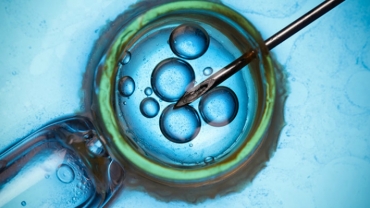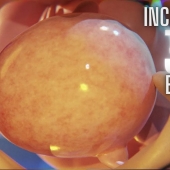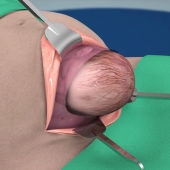Having a baby is an exciting, and sometimes, scary time in your life. This animation will show you some of the care you can expect to receive in labour.
Natural Childbirth Facts
1. Most Satisfied: Despite the discomfort inherent in a natural childbirth, the women who experience it tend to rate their birth as more satisfying than women who choose an epidural.
2. Less than Half: In the United States, approximately 39% of women who have vaginal birth do so without an epidural.
3. Hispanic Majority: Women of Hispanic origin are more likely to have a natural childbirth in the United States than women of any other race.
4. Increases With Age: The older you are, the more likely you are to choose a natural childbirth. Women aged 40 and over are the least likely to choose an epidural.
5. 2nd Time Moms: Moms who have given birth before are more likely to have a natural childbirth than first-time moms.
6. Rates Vary By State: Natural childbirth rates vary widely by state. Only 22% of women living in New Mexico choose an epidural, while over 78% of women living in Kentucky receive anesthesia.
7. Certified Nurse Midwife: Women who give birth attended by a certified nurse midwife (CNM) are more likely to have a natural childbirth than women who give birth attended by a medical doctor.
8. Continuous Labor Support: Women who have continuous labor support from a well-prepared partner or doula are more likely to have a natural childbirth than women who do not.
9. Loose Stool: Early labor triggers the release of prostaglandins–hormones that help stimulate contractions in smooth muscle. The intestines and bowel are made of smooth muscle. As a result, most women who are unmedicated will have loose stool during early labor.
10. Push or Poop: The urge to push during a natural birth is commonly mistaken for the need to poop. As the baby’s head descends into the birth canal, it puts pressure on the same nerves that a bowel movement does. This creating the familiar sensation of having to poop.
11. Helpful Hormones: Mom’s body releases hormones like epinephrine in response to labor pain. When mom is coping well with labor through the use of breathing techniques, relaxation, or other coping tools, the epinephrine helps her along by promoting alertness and effective pushing.
12. No Need to Break Water: In a natural childbirth, the doctor does not need to break the water for baby to be born. It will likely happen on its own during labor or right before birth as the head crowns. Rarely, babies are born with the amniotic sac still intact.
13. Amniotic Sac Increases Comfort: Most women say that labor is more comfortable and contractions are easier to manage when the amniotic sac is still intact.
14. Ring of Fire: Right before the baby is born, the perineum (the area between the anus and vagina) gets stretched out as baby’s head starts to crown. The stretching skin causes a temporary burning sensation known as “the ring of fire.”
15. Rest & Be Thankful Phase: After the cervix is 10cm dilated, some women experience a brief period of time without any contractions. This may be your body’s way of giving you time to rest up for work of pushing, and is often known as the “Rest & Be Thankful Phase.”
16. Shorter Pushing Phase: Women who have a natural childbirth tend to experience a shorter pushing phase of labor and less instrumental deliveries than women who choose an epidural.
- 2460 views













